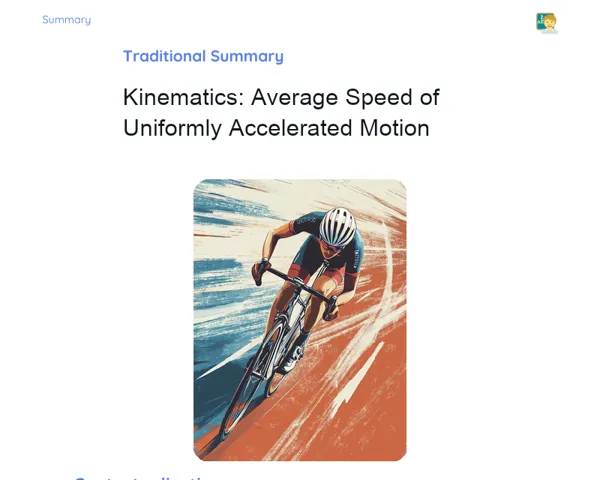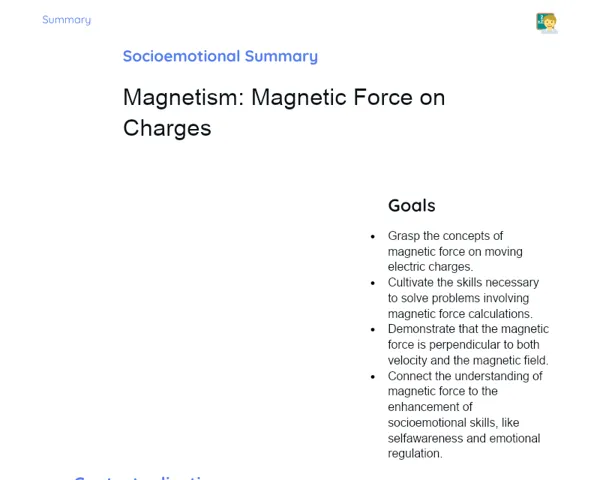Goals
1. Engage with and apply Newton's laws of Universal Gravitation.
2. Calculate the gravitational force between two objects using Newton's formula.
3. Explore the motion of celestial bodies in the Solar System through the lens of gravitational interactions.
Contextualization
Gravitation is a fundamental force of nature that permeates our daily lives, from the simple act of an apple falling to the ground to the intricate orbits of planets around the Sun. Gaining a clear understanding of gravitation enables us to interpret natural phenomena and explore the universe more safely and effectively. For instance, aerospace engineers rely on gravitational principles to chart the paths of rockets and satellites, while astronomers utilize this knowledge to predict celestial movements.
Subject Relevance
To Remember!
Newton's Law of Universal Gravitation
Newton's Law of Universal Gravitation asserts that every two objects in the universe attract each other with a force that corresponds directly to the product of their masses and inversely to the square of the distance separating them. This law is crucial for understanding gravitational interactions on both Earth and in the cosmos.
-
Gravitational Force: This is the attractive force existing between two mass-bearing bodies.
-
Proportionality: The force increases with the masses of the bodies involved.
-
Inverse Proportion: The force decreases as the distance between the bodies increases.
-
Gravitational Constant (G): This is the proportionality constant in Newton's equation.
Gravitational Force between Two Bodies
To calculate the gravitational force acting between two bodies, we can use the formula F = G * (m1 * m2) / r^2. Here, F represents the gravitational force, G signifies the gravitational constant, m1 and m2 are the masses of the bodies, and r is the distance separating them. This calculation is fundamental for predicting and analyzing the motion of celestial bodies and satellites.
-
Formula: F = G * (m1 * m2) / r^2.
-
Gravitational Constant (G): Its value is 6.674×10^-11 N(m/kg)^2.
-
Importance: This concept is key to grasping the interactions between celestial bodies.
-
Application: It is integral to devising satellite orbits and planning space missions.
Motion of Celestial Bodies in the Solar System
Celestial bodies like planets, moons, and asteroids navigate through the Solar System along paths dictated by gravitational forces. Understanding these trajectories is essential for various scientific and technological purposes, including the prediction of astronomical events and formulating space mission plans.
-
Orbits: Celestial bodies typically follow elliptical or nearly elliptical paths.
-
Gravitational Interactions: These forces dictate the motion of bodies in space.
-
Kepler: Kepler’s laws outline the orbital motions of planets.
-
Applications: This knowledge aids in predicting eclipses, strategic space mission planning, and the proper deployment of satellites.
Practical Applications
-
Space Mission Planning: A solid understanding of gravitational laws is paramount for launching probes and spacecraft to other planets, ensuring they are on the right path.
-
Satellite Technology: Effective positioning and maintenance of satellites in orbit depend on a clear grasp of gravitational forces.
-
Prediction of Astronomical Events: Astronomers rely on gravitation laws to forecast events such as eclipses, planetary transits, and celestial alignments.
Key Terms
-
Gravitation: The attractive force acting between any two bodies with mass.
-
Gravitational Constant (G): The value is 6.674×10^-11 N(m/kg)^2, a crucial part of the gravitational force formula.
-
Orbit: The curved path taken by a body around another under the influence of gravitational pull.
-
Gravitational Force: The force that draws two bodies together based on their masses and the distance separating them.
Questions for Reflections
-
How might our understanding of gravitation shape the planning of future space missions?
-
In what subtle ways does gravitation influence our everyday lives?
-
What does a deeper comprehension of gravitation mean for the development of communication satellites and similar technologies?
Exploring Gravitational Forces
This mini-challenge aims to reinforce the understanding of gravitational force and its practical implications in the motion of celestial bodies.
Instructions
-
Form pairs or groups of three.
-
Use a calculator and paper to solve the following problems:
-
Calculate the gravitational force between two imaginary objects: a sphere of 10 kg and a cube of 5 kg, spaced 2 meters apart. Apply the formula F = G * (m1 * m2) / r^2, using G = 6.674×10^-11 N(m/kg)^2.
-
Examine how changing the distance between two bodies impacts the gravitational force acting between them. Revisit the previous masses and calculate the gravitational force at both 1 meter and 4 meters distance.
-
Research a recent space mission and discuss within your group how an understanding of gravitational laws was crucial to its success.
-
Once you've solved the problems, share your findings and reflections with the class.



